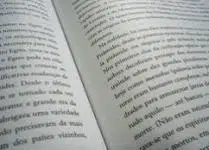The concept of cotext is used in the field of linguistics to refer to the set of elements that precede or follow a phrase or a term , determining its meaning or its appropriate interpretation. It is important to keep in mind, however, that the notion has different scope depending on the semiotician who uses it.
 It can be said that the cotext is a group of linguistic signs that maintain an interrelation with a sentence or a word in a certain situation. While the context (with N) is responsible for relating a sign with others that have the same characteristics and that are part of the same situation of existence, the cotext (without N) relates the sign with other signs that have different characteristics or that Although they share characteristics, they are in a different situation of existence.
It can be said that the cotext is a group of linguistic signs that maintain an interrelation with a sentence or a word in a certain situation. While the context (with N) is responsible for relating a sign with others that have the same characteristics and that are part of the same situation of existence, the cotext (without N) relates the sign with other signs that have different characteristics or that Although they share characteristics, they are in a different situation of existence.
As can be seen, both due to their similarity in writing and meaning, cotext and context are two ideas that are often confused and in which their differences are often not clear. There are those who even maintain that cotext is a level of context that provides information from the closest textual environment (what was expressed before or what is expressed below). In this sense, the context would also have other levels, such as external knowledge, data from other texts, etc.
In order to understand, therefore, the difference between context and cotext we can state that the first is that set of signs and semiotic characteristics similar to those of the one being studied, which have a certain connection and which are interesting to discover about it. On the other hand, cotext takes place when a sign is linked and related to others with different characteristics or with others that do have similar or different characteristics that are found in another existential situation.
In this way, we can establish that the context of an icon would be made up of other icons while its cotext would be made up of what they are symbols, for example.
In summary, it can be said that the cotext is formed by those linguistic elements that condition the interpretation of a phrase or a term, including it, preceding it or following it in the text .
When talking about context, it is also common for another very relevant term to come to light. We are referring to the so-called paratext. This is used to mention the set of statements that accompany the main text. Thus, for example, we would speak of paratext to refer to the index, what would be the preface, the title and subtitle, the footnotes, the dedication...
In this case, we need to further establish that there are two types of paratext. In this way, on the one hand, there is the editorial, which receives that name because it is made by the editor, and which can be made up of aspects such as the copyright, the cover, the catalog... On the other hand, there is the author's paratext. , which is made by the author and includes statements such as the epigraph or the dedication.
